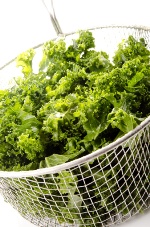 It used to be — until quite recently — that the nutritional value of a food was judged according to its “oxygen radical absorbance capacity” (ORAC) score. The ORAC score measured the antioxidant capacity of a food. However, the U.S. Department of Agriculture (USDA) recently removed the ORAC table from its web site.
It used to be — until quite recently — that the nutritional value of a food was judged according to its “oxygen radical absorbance capacity” (ORAC) score. The ORAC score measured the antioxidant capacity of a food. However, the U.S. Department of Agriculture (USDA) recently removed the ORAC table from its web site.
The problem seems to be that the specific role of antioxidants in the human body is still in some murky territory. While there are a number of bioactive compounds theorized to have a role in preventing or healing various chronic diseases, the USDA now states that the associated metabolic pathways are not completely understood. It could be that non-antioxidant mechanisms, still undefined, may be responsible.
In this void created by the withdrawal of the ORAC chart, a new nutrient-rating system has appeared – it’s called the “ANDI” score. Created by a doctor (Joel Fuhrman) who specializes in nutrition-based treatments for obesity and chronic disease, the ANDI score is based on a health equation: Health = Nutrients/Calories (abbreviated as H = N/C).
ANDI stands for “Aggregate Nutrient Density Index.” An ANDI score shows the nutrient density of a food on a scale from 1 to 1,000 based on nutrient content. ANDI scores are calculated by evaluating an extensive range of micronutrients, including vitamins, minerals, phytochemicals, and antioxidant capacities.
Why would you want to know the ANDI score of a food? The ANDI equation is supposed to predict your future health by telling you the micronutrient per calorie density of your diet. In other words, the more micronutrients in the foods you choose to eat, the healthier you’re likely to be.
For those struggling with health problems, eating foods with a high ANDI score could help give the body a healing boost. Here’s a quick list of the top seven scorers taken from these basic categories: nuts and seeds; fruit; green vegetables; non-green vegetables; and beans.
— Sunflower seeds (with a score of 78)
— Strawberries (a score of 212)
— Mustard/collard greens, kale, watercress (all with a score of 1,000)
— Radishes (with a score of 554)
— Lentils (with a score of 104)
To learn more about one of the top scorers — collard greens — and how this dark-green leafy vegetable could protect your eyesight, read the article What Protects Your Eyes Better Than Carrots Can?
